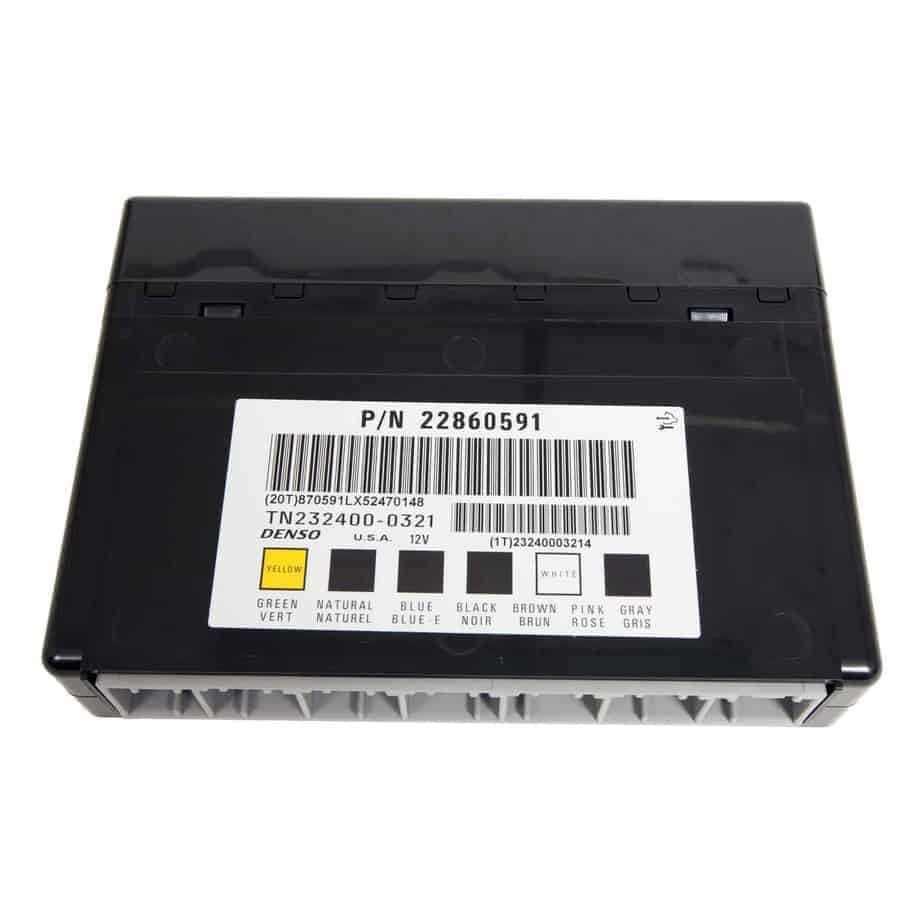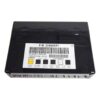Restore Your Vehicle’s Brain and Banish Electrical Gremlins
As a technician with over two decades of experience, I’ve seen firsthand the chaos a failing Body Control Module (BCM) can cause. It’s the central command for your vehicle’s comfort and convenience features. When it starts to go, you’ll experience bizarre, frustrating issues—power windows with a mind of their own, dashboard lights flickering like a holiday display, or a security system that randomly prevents you from starting your car. It’s not just an annoyance; it’s a breakdown of your vehicle’s core functions.
This isn’t just a replacement part; it’s a complete, ready-to-install solution. We take the biggest headache out of the equation: programming. Before we ship this GM Body Control Module, we flash it with the latest GM software, perfectly matched to your vehicle using the VIN you provide. This means no expensive trips to the dealership for programming. You get a BCM that’s ready to communicate with your vehicle’s other modules right out of the box, restoring functionality and peace of mind.
A Technician’s Notebook: The Case of the Spooky Equinox
I once had a 2008 Chevy Equinox in my bay that was driving its owner crazy. The radio would turn on and off, the dome lights would flicker while driving, and sometimes the power locks wouldn’t respond. The owner had already replaced the battery and checked the fuses. After connecting my scan tool, I found a slew of communication error codes (U-codes) pointing to a network issue. The common denominator? The BCM. Water intrusion from a leaky windshield seal had caused corrosion on the BCM’s internal board. Swapping in a pre-programmed BCM like this one solved every single issue in under an hour. It’s a classic failure I’ve seen hundreds of times on these platforms.
Is Your GM Showing These Symptoms?
A failing BCM can manifest in numerous ways. If you’re noticing any of the following, it’s a strong indicator that your module needs attention:
- ✔ Erratic or non-functional power windows, door locks, or mirrors.
- ✔ Interior or exterior lights flickering, staying on, or not working at all.
- ✔ The security or anti-theft system acting up, causing no-start conditions.
- ✔ The horn honking randomly or not working when pressed.
- ✔ Inaccurate gauge readings on the instrument cluster.
- ✔ Communication error codes stored, such as U0140 (Lost Communication with BCM).
- ✔ The air conditioning system not engaging properly.
A Straightforward Guide to Your BCM Installation
Replacing your GM Body Control Module is a manageable job for a confident DIYer. While the location varies slightly by model (see fitment list), the process is generally similar. Here are the basic steps:
- Safety First: Always disconnect the negative terminal from your vehicle’s battery and wait a few minutes to ensure all systems are powered down.
- Locate the BCM: On most of these vehicles, the BCM is located under the driver’s side or center of the dashboard. You may need to remove a lower dash panel for access.
- Disconnect and Remove: Carefully unplug the electrical connectors. Most have a locking tab that needs to be depressed. Once disconnected, unbolt or unclip the old module from its mounting bracket.
- Install the New Module: Mount your new, pre-programmed BCM in the same location. Reconnect all electrical connectors, ensuring they click securely into place.
- Reconnect Power: Reattach the negative battery terminal.
- Perform Final Checks: Turn the key to the ‘On’ position and test all body functions—lights, locks, windows, radio, etc. Note that some models may require the additional procedures outlined below.
Important Post-Installation Note: Depending on your specific vehicle, you may need a professional scan tool to perform a “Brake Pedal Position Relearn” or an “Airbag System Sync” if a warning light appears. This is a standard procedure when replacing a BCM. Also, there is no core charge for this part, so you can keep your old module.
Guaranteed Vehicle Compatibility
This module is a direct replacement for a wide range of GM vehicles and interchanges with numerous part numbers, ensuring a perfect match. Please verify your vehicle is on this list. This unit replaces part numbers: 10382479, 15093910, 15276271, 15299986, 15819552, 15828601, 15837419, 15872388, 15872421, 15880684, and many more.
ACADIA 07-12 (LH dash)
AVALANCHE 1500 10 (under steering column, ID 25892622)
CAPRICE 11-13
CAPTIVA SPORT 12 (center dash)
CTS 08-13 (LH/RH dash)
DTS 06-11 (RH center dash)
ENCLAVE 08-12 (LH dash)
EQUINOX 07-09 (center dash)
ESCALADE 10 (under steering column)
ESCALADE ESV 10 (under steering column)
ESCALADE EXT 10 (under steering column)
EXPRESS 1500/2500/3500 VANS 08-12
G8 08-09 (center dash)
HUMMER H2 08-09 (LH firewall)
IMPALA 06-13 (LH dash)
LUCERNE 06-11 (right side dash)
MONTE CARLO 06-07 (LH steering column)
OUTLOOK 07-10 (center dash)
SAVANA 1500/2500/3500 VANS 08-12
SRX 07-09 (LH dash)
STS 10 (center dash)
SUBURBAN 1500 10 (under steering column)
TAHOE 10 (under steering column)
TORRENT 07-09 (center dash)
TRAVERSE 09-12 (LH dash)
VUE 08-10 (center dash)
YUKON 10 (under steering column)
YUKON XL 1500 10 (under steering column)
Frequently Asked Questions
GM Body Control Module
Why do you need my VIN?
Your VIN (Vehicle Identification Number) is essential. It allows us to load the exact, correct software and configurations for your vehicle’s specific options. This ensures the works correctly right out of the box, saving you a costly trip to the dealer for programming.



